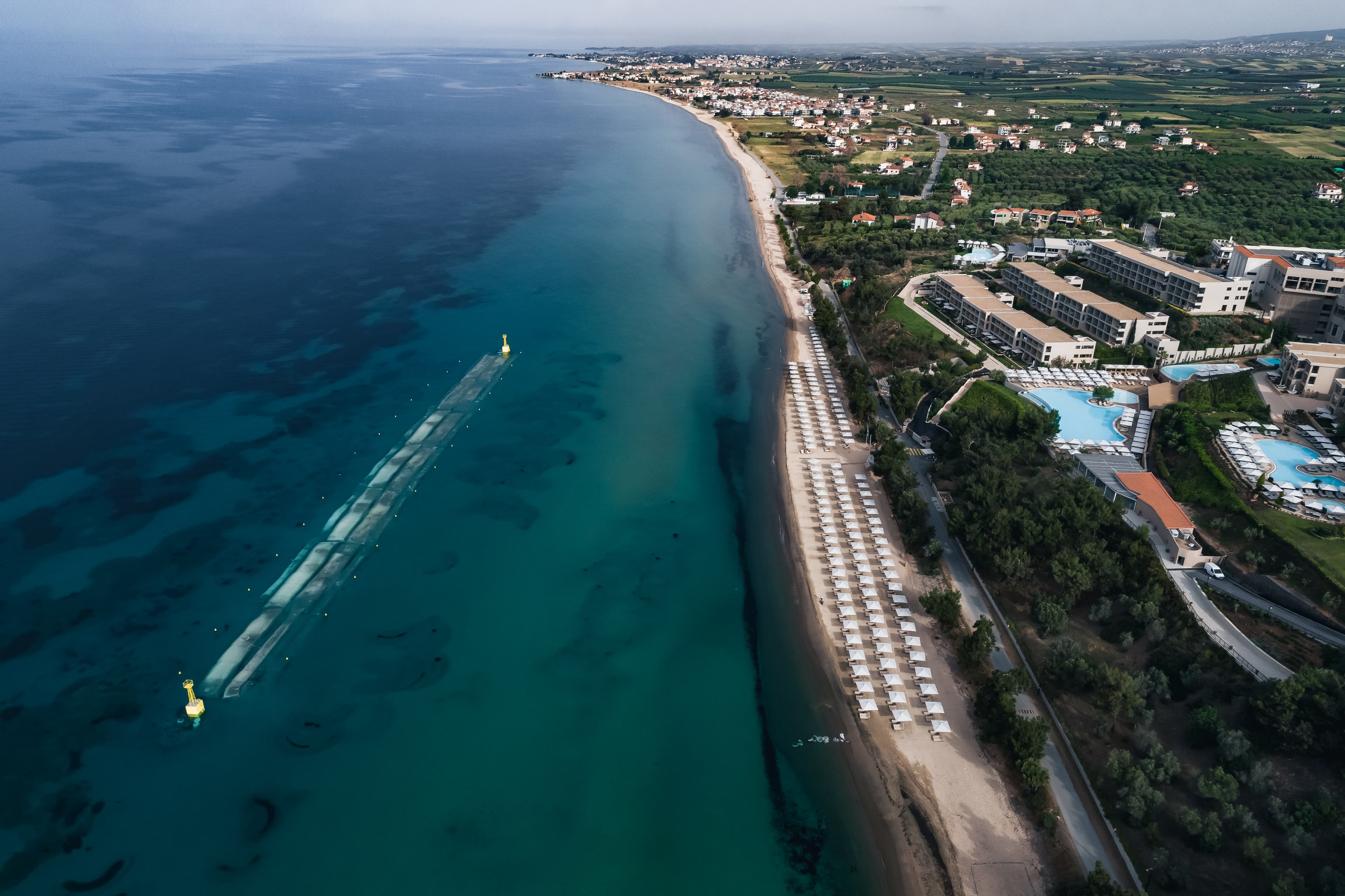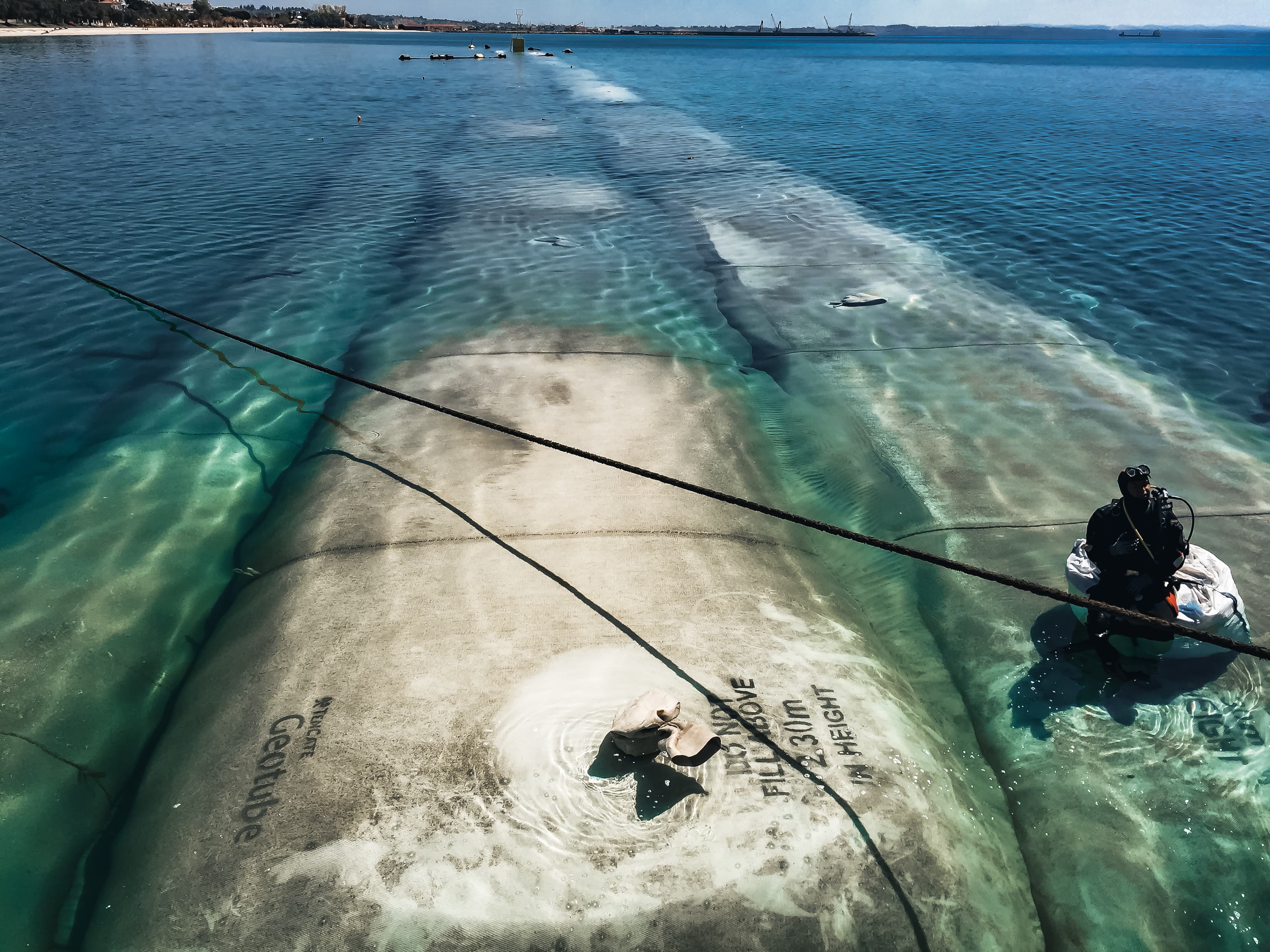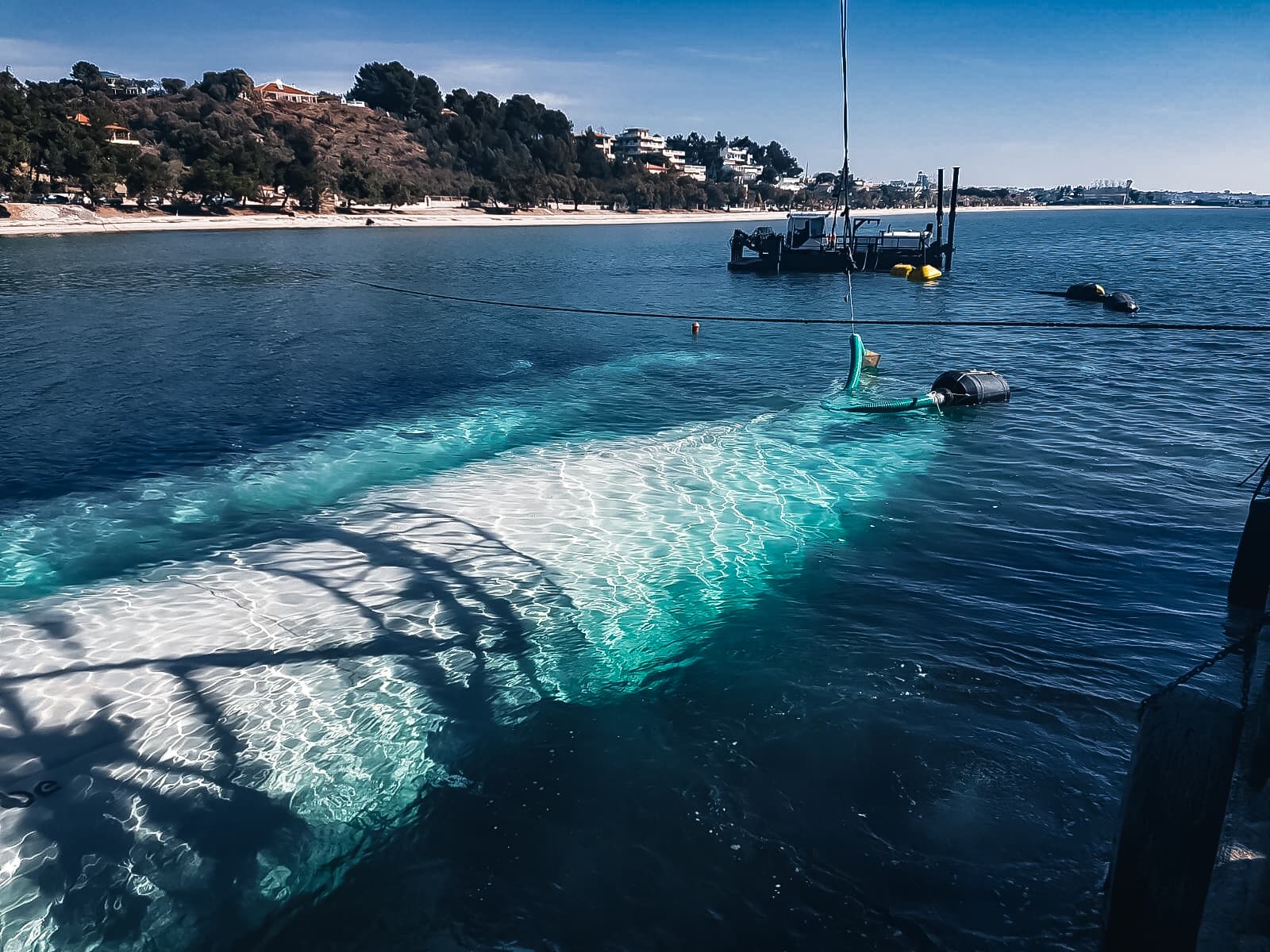Overview
A hotel owner in the hospitality sector operating primarily in Greece recognized the need to enhance the beach experience for his resort guests. The main aim was to provide a pristine beach with reduced maintenance needs. To achieve this, a decision was made to establish a submerged breakwater using the GEOTUBE® systems. This would create a more tranquil sea environment, decreasing wave intensity at the shore. Located near Moudania, Greece, the project commenced in January 2017, targeting completion before that year's Eastern break.
Challenge
The primary challenge was the collaboration between Aktor and a Thessaloniki-based diving company to install the scour aprons and GEOTUBE systems, all against the backdrop of an impending hotel grand opening during Easter. Standard rubble mount submerged breakwaters would not be suitable due to sharp edged rocks, making the area unsafe for bathers. A soft textile GEOTUBE structure would be more friendly for the beach users.
The dynamic sea environment added layers of complexity, with wave and weather unpredictability posing potential threats. The project required the installation of large structures underwater with relatively small equipment. A major accomplishment was the significant reduction in wave intensity through the newly introduced systems.
Solution
To achieve the project's goals, a range of products was utilized, including 5 scour aprons (GT600M) of 40 x 16 m (131 x 52.5 ft) dimensions, as well as 28 GEOTUBE systems (GT1000MB) of varying diameters and a length of 30.2 m (99 ft). These products, manufactured by Solmax, were chosen for their compatibility with the breakwater design, UV stability, beach colour and adherence to quality and safety standards. Notably, each system had a unique ID for full traceability, and for that from every fifth system the seam strength is tested in a lab setting.
The final design, which deviated from the initial proposal of using smaller diameter systems, allowed for greater stability against wave actions. Key learnings from the project included understanding the grain size distribution of fill material to determine filter characteristics and the benefits of larger diameter systems for quicker installations. The installation was completed successfully within the deadline, even in adverse sea conditions.
The project's success was attributed to the experience demonstrated, quality of products used, and the expansive global coverage provided. This triumph set the stage for another project, awaiting installation due to permit considerations.


